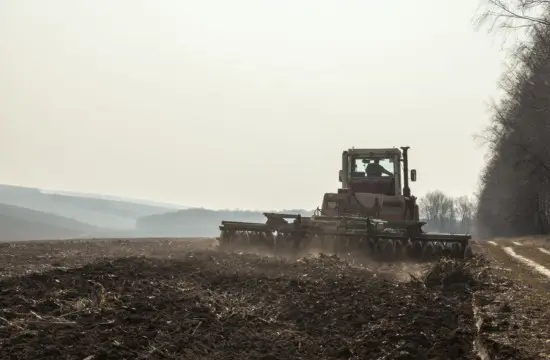Tillage has been a key component of agriculture throughout history because it serves many purposes and provides a number of benefits to farmers. However, as time passes and new research and technology emerge, it’s becoming clear that tillage has some negative effects on soil and water quality, which ultimately leads to a decrease in crop production and nutrient efficiency.
Does this mean that everyone needs to stop implementing tillage completely? Absolutely not. There are a variety of tillage methods available. Because every farm is different, the type of tillage you choose primarily depends on your soil and the needs of your operation.
First, let’s talk traditional tillage methods, like primary and secondary tillage and cultivation.
These methods allow farmers to condition the soil for planting, suppress weeds and pests, manage and incorporate residue, and alter the shape of the soil surface to make it a more ideal planting environment.
But those benefits come at a cost. Traditional tillage methods can cause compaction, both on the soil surface and beneath it. The latter, or subsoil compaction, reduces the ability of the crop roots to reach the nutrients they need to thrive.
Water penetration is another issue with tillage. Each tillage pass breaks up soil aggregates and reduces the soil’s ability to hold moisture. In fact, soil moisture drops by a quarter inch with every pass through the field.
Next, let’s look at conservation tillage.
Conservation tillage – any method of tillage that leaves at least 30 percent of the soil surface residue on the field – reduces the impact of tillage while, in some cases, still reaping its benefits. Several types of tillage fall under the category of conservation tillage – each with its own varying degree of soil disturbance. These less invasive methods can leave up to as much as 70 percent of residue intact.
No-till: This is the least invasive of the conservation tillage practices because there’s no tillage taking place. Crops are planted directly into residue that has not been tilled.
Strip-till: With strip-till, crops are planted directly into strips that have been tilled in the soil. The rest of the crop residue in the field is left untouched.
Ridge-till: Like strip-tilling, in ridge-tilling, the soil between the seed bed is left undisturbed. Unlike strip-tilling, the seed bed is prepared on ridges in the soil as opposed to strips.
Mulch-till: This is the most invasive of the conservation tillage practices. In this tillage practice, most of the soil surface is disturbed by noninversion tillage methods such as vertical tillage, chiseling and disking, and involves spreading residue uniformly on the soil surface.
Cutting down on tillage can reduce erosion by 60-90 percent, depending on the method used, keeping nutrients in place on the field.
Tillage also reduces the amount of organic matter in the soil. Organic matter is a key source of crop nutrients. In addition to being a good source of nitrogen (N) and phosphorus (P), organic matter also helps hold on to positively charged elements like potassium, calcium and magnesium, and natural chelates maintain micronutrients like zinc, copper and manganese. Therefore, by reducing tillage, there is more soil organic matter to produce a healthier, more productive crop.
Tillage also creates compaction. While many believe that tillage methods eliminate compaction, that is really only true for topsoil compaction. These methods leave behind compaction beneath the soil surface, making it difficult for roots to penetrate the soil and access soil nutrients. Compaction also causes poor internal drainage, which can lead to nitrogen loss via denitrification and reduce the amount of mineralized nitrogen.
Besides the agronomic and environmental benefits of reduced tillage, there are also practical and operational benefits that come along with reducing the practice. For example, less invasive tillage means fewer tractor passes, which save time, labor and fuel costs. Each year, nearly 282 million gallons of fuel are saved by farmers who use continuous no-till on their operations.
While progress has been made it the realm of conservation tillage, there is still room for improvement and increased adoption. Currently, continuous no-till has only been adopted across 21 percent of all cultivated cropland in the U.S. Each acre of cropland that is converted to conservation tillage methods makes an impact, and as these methods become increasingly more common, the benefits will become more apparent to farmers and their communities.


